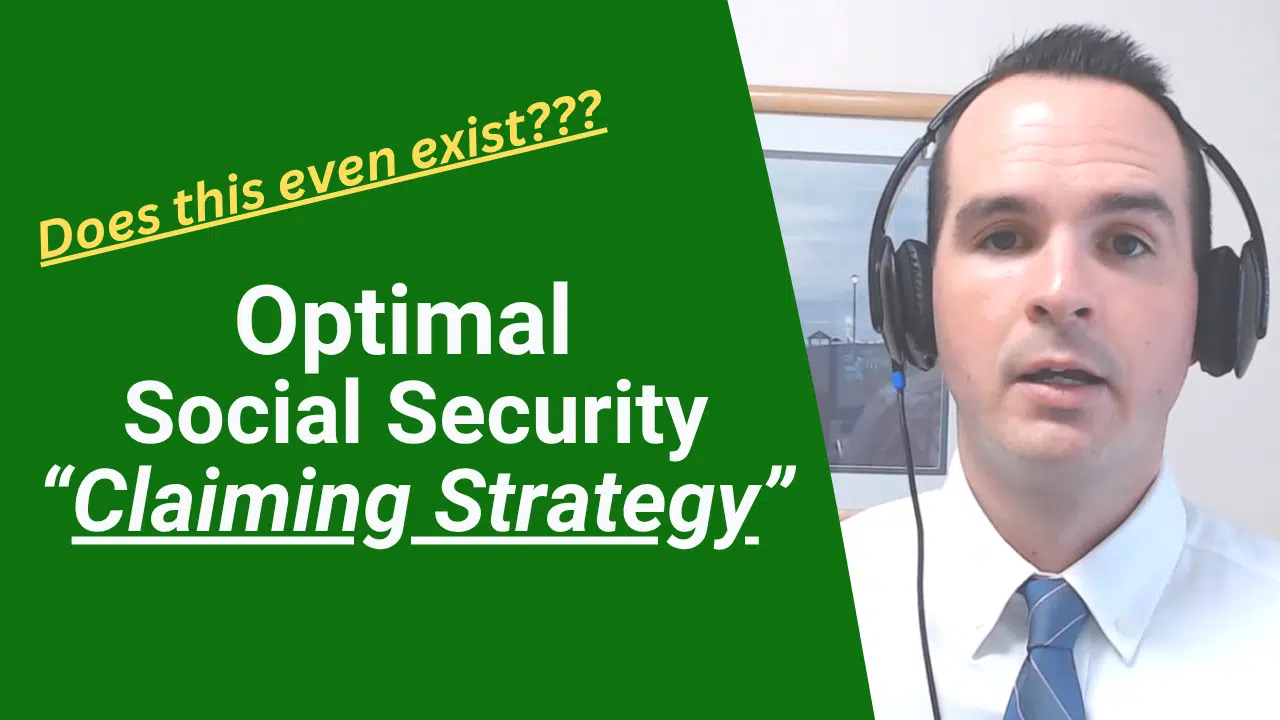Optimal Social Security Claiming Strategy
Key takeaways from the video:
1. An optimal Social Security Claiming Strategy depends on balancing breakeven analysis, longevity risk, and lifestyle goals.
2. Claiming Social Security at 62 vs 70 has major implications for retirement income and lifetime benefits.
3. Married couples can coordinate Social Security benefits to provide early income while deferring higher benefits for the higher-earning spouse.
4. Once claimed, Social Security is a “one-way door” decision, making careful planning essential for your optimal claiming strategy.
Optimal Social Security Claiming Strategy – Links
Catch all our Mullooly Asset videos here
Subscribe to the Mullooly Asset YouTube Channel
Watch this episode (“Optimal Social Security Claiming Strategy?”) on our YouTube Channel
JP Morgan Guide to Markets (referenced by Case in the video)
Optimal Social Security Claiming Strategy – Transcript
Optimal Social Security Claiming Strategy
There’s no such thing as an optimal social security claiming strategy – for everyone.
Nobody knows how long we’re going to live. If we did, the answer would be much more straightforward.
So the right claiming strategy — or optimal claiming strategy for you — on a personal level is probably a balance and a mix of these three factors:
1. The first factor is break even risk.
It’s easy to think about this. If we set out a hypothetical scenario, let’s say a person knows they’re going to pass away at age 75 and they want to compare two different claiming strategies.
So they look at what their benefit looks like at 62 versus what it looks like if they wait until 70.
At 62, this person will get $2,000 per month.
If they claim at 70, they will get $3,700 per month.
If they claim it’s 62, pass away at 75, they’ll receive over their lifetime $312,000 from Social Security. Now, in real life, social security – with inflation – adjusts (almost) each year. So it’s not going to be that flat $2,000 every month.
But for simplicity’s sake, for, for this video and this example’s sake, we’re going to keep it at that flat $2,000 per month and not inflation adjusted.
So they’ll get $312,000 over their lifetime… from 62 until 75.
Let’s say they wait until age 70.
They’re going to get that $3,700 per month between 70 and 75, when they pass away.
They’re going to get $222,000.
So this break even analysis says that the person should claim at 62.
Breakeven analysis, you know, it’s different for everyone and it is a good balance against the second factor, which is longevity risk.
2. Longevity risk is exactly what it sounds like. It’s the risk that you’re going to live for a very long time and potentially for longer than you might think you will, and for longer than you planned for.
Just looking at data from JP Morgan’s most recent “Guide To The Market”…
A married couple, age 65, today has a 71% chance of both spouses or at least one spouse, seeing age 85.
And 44% chance of one spouse seeing age 90.
If we only look at data for healthy non-smoking couples, age 65, those odds increase to 90% for living until age 85.
And 73% for one living until age 80.
So longevity risk often suggests deferring for as long as possible.
Now with a married couple, you have to consider both social security income streams if both spouses are entitled to claiming those benefits. For married couples, you can often hedge both of these risks and, it may often make sense for the higher earner of the two higher earner spouse to defer.
(And) the lower earning spouse to claim at 62. So that way you get some income at 62 as soon as you can, but you hedge longevity risk, by the highest earner deferring until age 70.
3. The third factor – and arguably the most important factor is not as easy to quantify as the first two.
But the third factor is your lifestyle and your goals.
When you’re going to “set sail” on retirement, you have to consider your other income sources, your asset base, your expenses, where you’re starting from, what you want to do in retirement. You have to factor all that in.
You might need to claim at 62 or, you know, you might have a pension or enough savings that you can continue to defer until age 70.
You have to put it in your personal circumstances. And, you have to create your own optimal social security claiming strategy.
See what makes the most sense for you from a dollars and cents perspective. But also from a lifestyle perspective that allows you to live the life that you want to live, while you know, not sacrificing the long term.
Another thing to consider is that once you turn social security ON, once you claim those benefits, it’s a “one-way door.”
You can’t back out of it. Those benefits are set for life.
So the benefits are going to be the benefits – except for that inflation adjustment each year.
You’re set on that path, once you decide to claim.
Another benefit of deferring the claiming of your benefit is you just maintain that flexibility.
You can always go through that door, but once you go through it, you can’t go back out.
You can’t come back out.
There IS an optimal social security claiming strategy for you.
You just have to put it into context, weigh all these different factors.
And then make the right choice for you.
Seems pretty simple, right?
Thank you for watching “Optimal Social Security Claiming Strategy”







